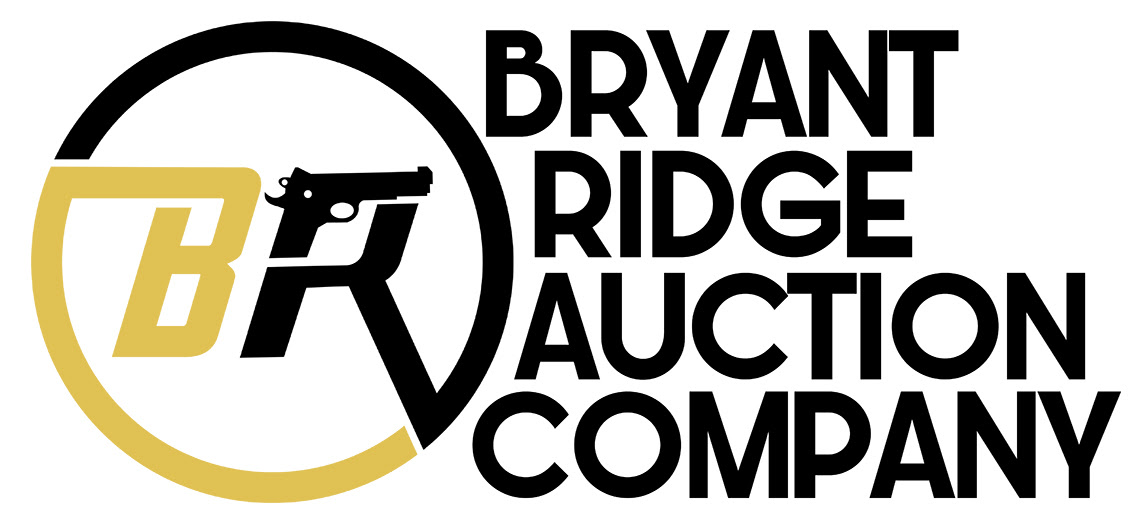Description

Item Description
Bryant Ridge Auction Company is pleased to present this German made WWII Era semi-auto rifle today for a penny start auction, this is the Berlin-Lubecker Gewehr 43 (G 43)!
SPECIFICATIONS:
Manufacturer: Berlin-Lubecker
Model: Gewehr 43 (G 43)
Serial: 9577
Date of Manufacture: 1944 (According to DUV 44 Manufacture/Date Code)
Caliber: 7.92x57mm Mauser
Finish: Blue
Barrel Length: 21 1/2" Threaded Barrel
Optics/Sights: Hooded Blade Front and Tangent-Type with V-Notched Rear
Stock/Grips: Smooth Hardwood
Action: Semi-Auto
Markings: Standard
Bryant Ridge's Analysis:
In 1941, Germany invaded the Soviet Union as part of Operation Barbarossa. Just prior to the opening of hostilities the Soviet Red Army had started re-arming its infantry, complementing its older bolt-action rifles with the new semi-automatic SVT-38s and SVT-40s. This was a shock to the Germans, who ramped up their own semi-automatic rifle development efforts significantly.
The SVT series used a simpler gas-operated mechanism, which was soon emulated by Walther in its successor to the G41(W), producing the Gewehr 43 (or G43). The simpler, sturdier design and mechanism of the G43 made it lighter, easier to produce, more reliable, and also much tougher than the Gewehr 41; German mountain troops would use them as ladder rungs during climbing. The addition of a 10-round stamped-steel detachable box magazine was an improvement over the integral box magazine of the G41(W). The Gewehr 43 was intended, like the G41, to be loaded using 5-round stripper clips without removing the magazine. Soldiers armed with the weapon typically carried one standard stripper clip pouch and a Gewehr 43 pouch with two spare magazines. The G43 utilizes the same flapper-locked mechanism as its predecessor. The Gewehr 43 was put into production in October 1943 and followed in 1944 by the Karabiner 43 (K43), which was identical to the G43 in every way except for the letter stamped on the side. The name change from Gewehr to Karabiner (carbine) was due to the fact the barrel was actually two centimeters shorter than the standard Karabiner 98k and therefore the term Gewehr (meaning: rifle) was somewhat unfitting. The Wehrmacht intended to equip each grenadier (infantry) company in the army with 19 G43s, including 10 with scopes, for issue as the company commander saw fit. This issue was never completely achieved. The iron sight line had a hooded pointed-post-type front sight and a tangent-type rear sight with a V-shaped rear notch. These standard sight lines consisted of somewhat coarse aiming elements, making it suitable for rough field handling, aiming at distant area fire targets, and low-light usage, but less suitable for precise aiming at distant or small point targets. It is graduated for 7.92×57mm Mauser s.S. Patrone cartridges loaded with 12.8 g (197 gr) s.S. (schweres Spitzgeschoss – "heavy pointed bullet") ball bullets from 100 to 1,200 m (109 to 1,312 yd) in 100 m (109 yd) increments.
Gewehr 43s were made by Berlin-Lübecker Maschinenfabrik in Lübeck (weapons coded "duv", and later "qve"), Walther (weapons coded "AC") and the Wilhelm Gustloff-Werke (weapons coded "bcd"). Walther used its satellite production facilities at Neuengamme concentration camp in addition to its main production facilities at Zella-Mehlis to make the rifles (It does not appear that complete weapons were assembled in the camps, similar to how Radom P35 pistols were assembled in occupied Radom, Poland without their barrels, which were built and installed by Steyr in Austria), Wilhelm Gustloff-Werke used some slave workers to augment its depleted staff from Buchenwald concentration camp. The total production by the end of the war is estimated to have been 402,713 of both models, including at least 53,435 sniper rifles: these G43/K43s were used as designated marksman/sniper weapons, fitted with the Zielfernrohr 43 (ZF 43/ZF 4) telescopic sight with 4× magnification. The weapon was originally designed for use with the Schießbecher rifle grenade launcher (standard on the Karabiner 98k as well) and the Schalldämpfer suppressor, however, these accessories were deemed unsuccessful in tests and were dropped even before the rifle made it to serial production.
Return Policy:
We gladly offer a 3 day unfired inspection policy from the time that the firearm is delivered to your FFL. Refunds are available for all qualifying orders.
Model: Gewehr 43 (G 43)
Serial: 9577
Date of Manufacture: 1944 (According to DUV 44 Manufacture/Date Code)
Caliber: 7.92x57mm Mauser
Finish: Blue
Barrel Length: 21 1/2" Threaded Barrel
Optics/Sights: Hooded Blade Front and Tangent-Type with V-Notched Rear
Stock/Grips: Smooth Hardwood
Action: Semi-Auto
Markings: Standard
Bryant Ridge's Analysis:
In 1941, Germany invaded the Soviet Union as part of Operation Barbarossa. Just prior to the opening of hostilities the Soviet Red Army had started re-arming its infantry, complementing its older bolt-action rifles with the new semi-automatic SVT-38s and SVT-40s. This was a shock to the Germans, who ramped up their own semi-automatic rifle development efforts significantly.
The SVT series used a simpler gas-operated mechanism, which was soon emulated by Walther in its successor to the G41(W), producing the Gewehr 43 (or G43). The simpler, sturdier design and mechanism of the G43 made it lighter, easier to produce, more reliable, and also much tougher than the Gewehr 41; German mountain troops would use them as ladder rungs during climbing. The addition of a 10-round stamped-steel detachable box magazine was an improvement over the integral box magazine of the G41(W). The Gewehr 43 was intended, like the G41, to be loaded using 5-round stripper clips without removing the magazine. Soldiers armed with the weapon typically carried one standard stripper clip pouch and a Gewehr 43 pouch with two spare magazines. The G43 utilizes the same flapper-locked mechanism as its predecessor. The Gewehr 43 was put into production in October 1943 and followed in 1944 by the Karabiner 43 (K43), which was identical to the G43 in every way except for the letter stamped on the side. The name change from Gewehr to Karabiner (carbine) was due to the fact the barrel was actually two centimeters shorter than the standard Karabiner 98k and therefore the term Gewehr (meaning: rifle) was somewhat unfitting. The Wehrmacht intended to equip each grenadier (infantry) company in the army with 19 G43s, including 10 with scopes, for issue as the company commander saw fit. This issue was never completely achieved. The iron sight line had a hooded pointed-post-type front sight and a tangent-type rear sight with a V-shaped rear notch. These standard sight lines consisted of somewhat coarse aiming elements, making it suitable for rough field handling, aiming at distant area fire targets, and low-light usage, but less suitable for precise aiming at distant or small point targets. It is graduated for 7.92×57mm Mauser s.S. Patrone cartridges loaded with 12.8 g (197 gr) s.S. (schweres Spitzgeschoss – "heavy pointed bullet") ball bullets from 100 to 1,200 m (109 to 1,312 yd) in 100 m (109 yd) increments.
Gewehr 43s were made by Berlin-Lübecker Maschinenfabrik in Lübeck (weapons coded "duv", and later "qve"), Walther (weapons coded "AC") and the Wilhelm Gustloff-Werke (weapons coded "bcd"). Walther used its satellite production facilities at Neuengamme concentration camp in addition to its main production facilities at Zella-Mehlis to make the rifles (It does not appear that complete weapons were assembled in the camps, similar to how Radom P35 pistols were assembled in occupied Radom, Poland without their barrels, which were built and installed by Steyr in Austria), Wilhelm Gustloff-Werke used some slave workers to augment its depleted staff from Buchenwald concentration camp. The total production by the end of the war is estimated to have been 402,713 of both models, including at least 53,435 sniper rifles: these G43/K43s were used as designated marksman/sniper weapons, fitted with the Zielfernrohr 43 (ZF 43/ZF 4) telescopic sight with 4× magnification. The weapon was originally designed for use with the Schießbecher rifle grenade launcher (standard on the Karabiner 98k as well) and the Schalldämpfer suppressor, however, these accessories were deemed unsuccessful in tests and were dropped even before the rifle made it to serial production.
Return Policy:
We gladly offer a 3 day unfired inspection policy from the time that the firearm is delivered to your FFL. Refunds are available for all qualifying orders.
Shipping Details
Handgun Standard Shipping $50.00
Long Gun Standard Shipping $65.00
We strive to ship orders within the close of the following business day after payment and documentation is received.
Payment Details
We accept all forms of Payment including Personal Check, Business Check, PO Money Orders, Certified Check, Etc.
Please note we place a 7 business day hold on shipment, for all non-certified payments.
Return Policy
We gladly offer a 3 day unfired inspection policy from the time that the firearm is delivered to your FFL. Refunds are available for all qualifying orders.
Additional Details
Our #1 priority is customer satisfaction. We want to build a lasting trust in the relationship with our customers, so that you will always look to us for all your firearms needs. If you have any issues with your transactions please contact us, and we will work with you to resolve any issues you may have. We greatly appreciate your trust in us and we look forward to fulfilling all your future firearm needs.
Bryant Ridge also reserves the right to cancel any sales that may occur while gunbroker.com is experiencing technical issues that affects the entire site or a complete site outage, within an hour of the auction ending.
We have an amazing inventory of classic and collector firearms that we are adding to Gunbroker daily. Stay up to date on all of our latest auction by adding us to your favorite sellers list.
About Us
From a small town hobby, to a leader in the investment and collector grade firearms industry. Bryant Ridge Firearms is here to offer the best in quality and customer service when you are looking to unload your collector grade firearm collection.












